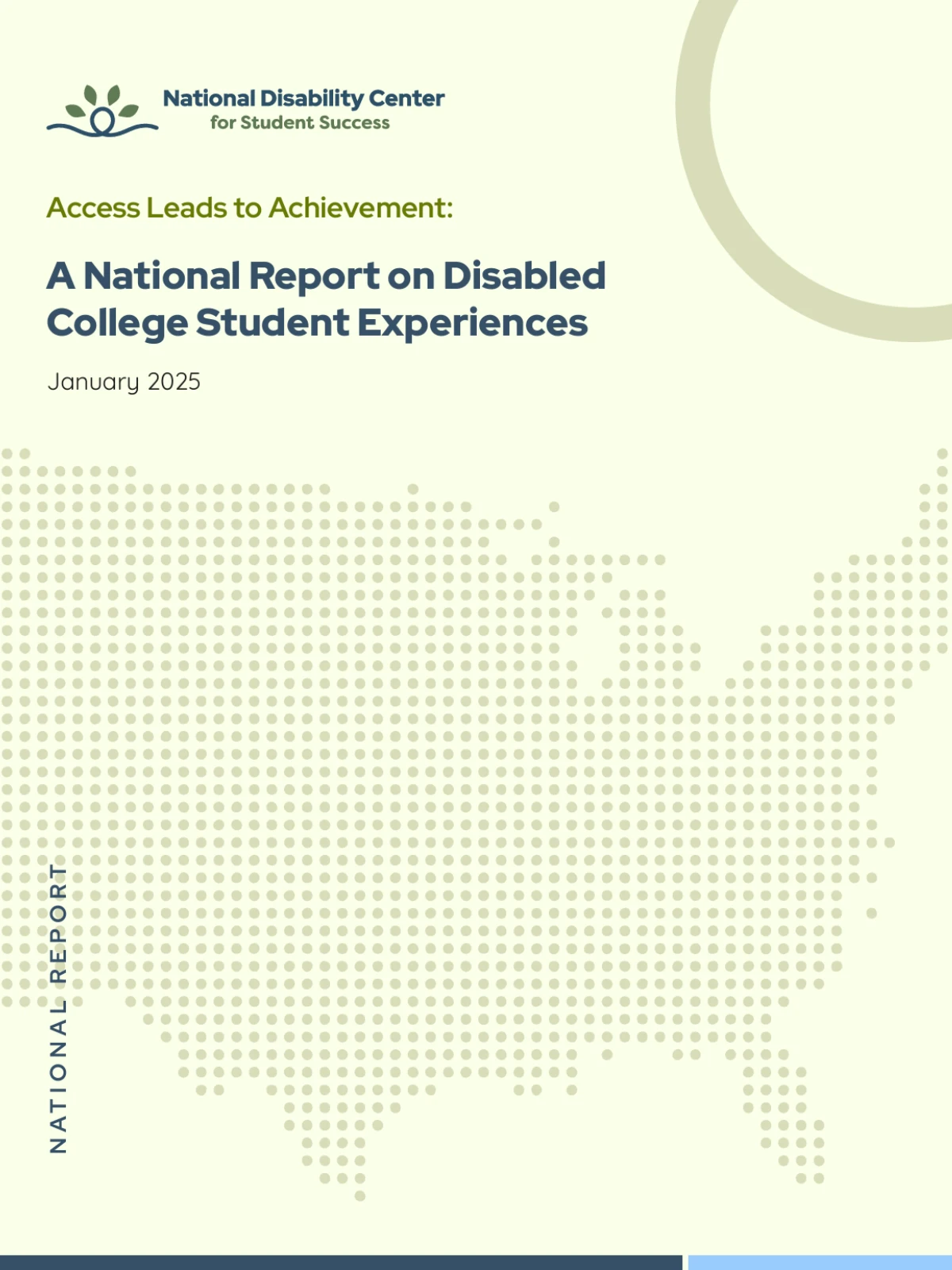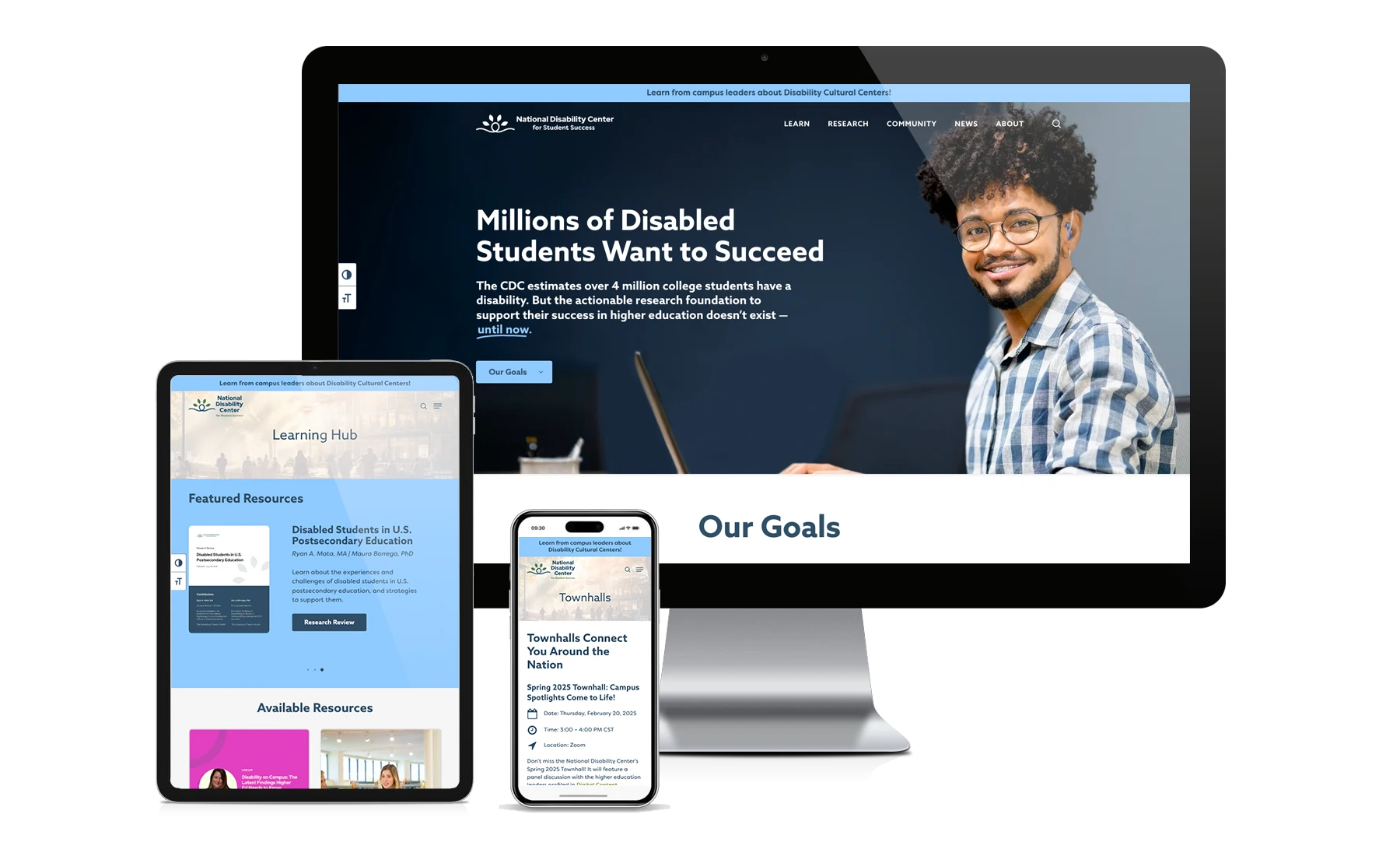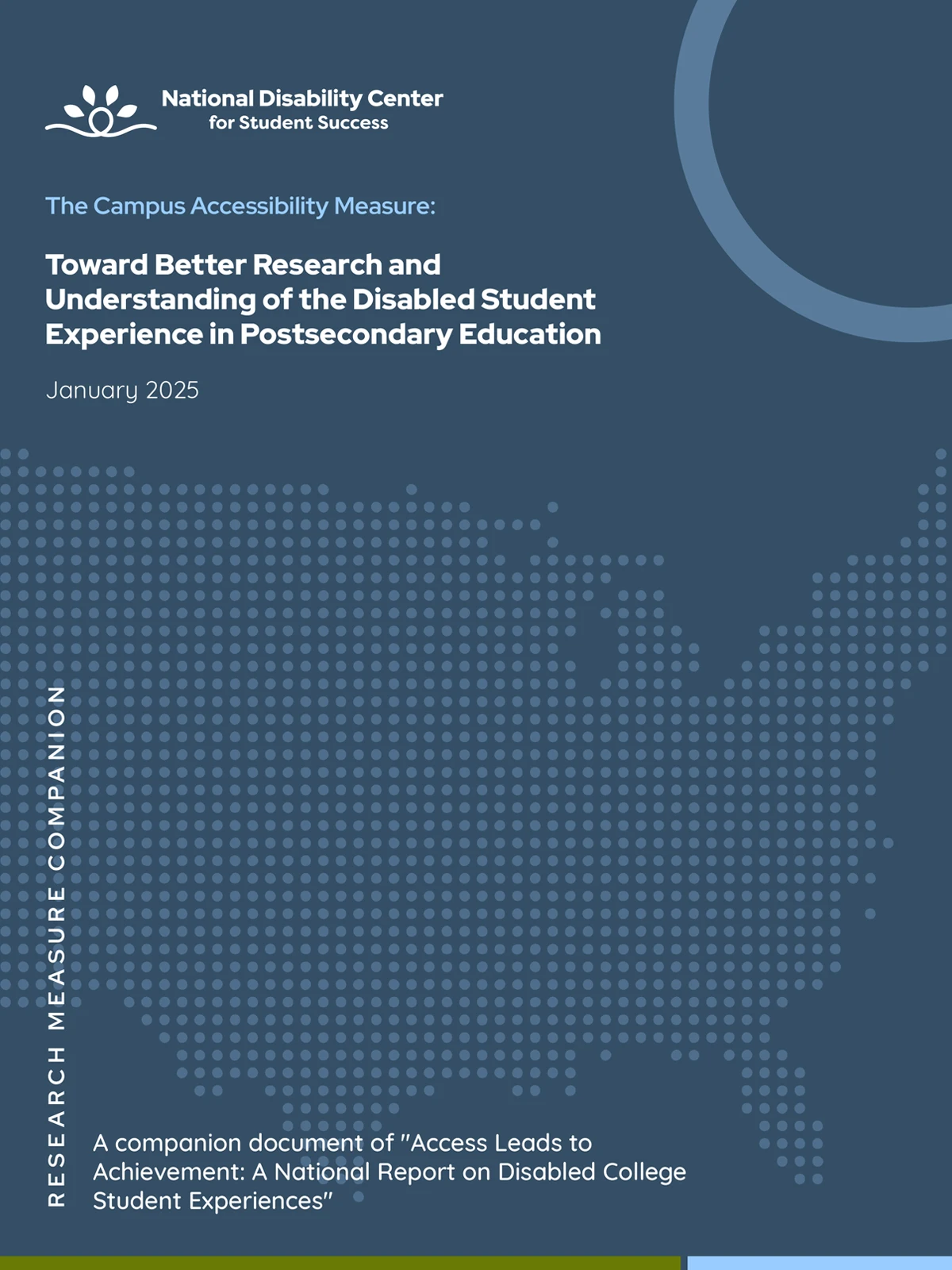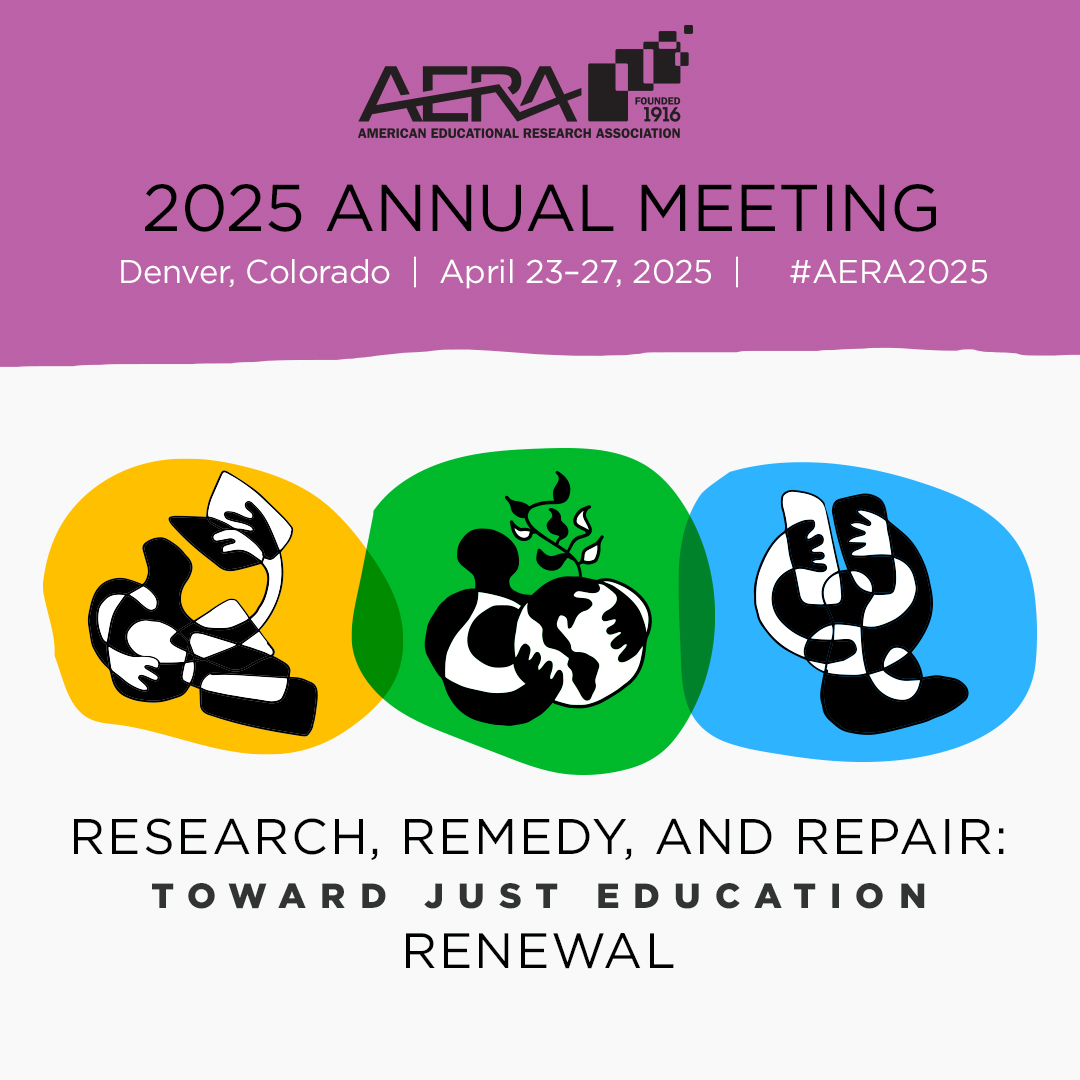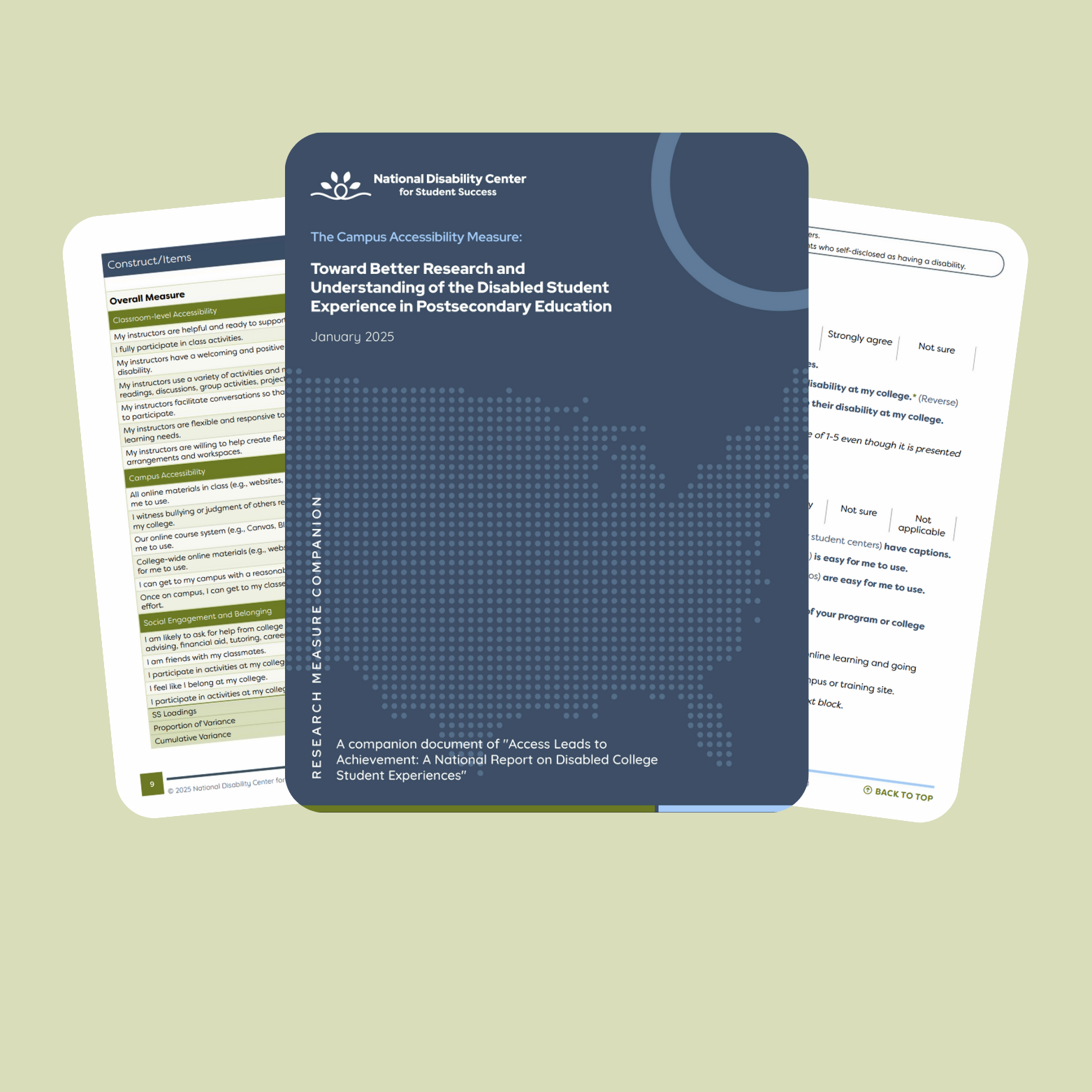The first national report from the National Disability Center for Student Success fills a critical knowledge and practice gap in all postsecondary pathways — career and technical training, 2-year community college, and 4-year programs — of the lived experiences of disabled students and what’s needed to support their success.
Access Leads to Achievement:
A National Report on Disabled College Student Experiences
Much of what we know about accessibility in higher education fails to capture the full student experience.
This report also introduces the College Accessibility Measure (CAM) — the first comprehensive assessment tool that prioritizes disabled students’ experiences and perspectives while remaining applicable for evaluation of accessibility for the entire student body. CAM is at the core of the National Disability Center’s mission to help establish an actionable research foundation to support the success of disabled students in higher education.
These report findings are based on a CAM survey of more than 500 college students nationwide and one-on-one interviews with disabled students.
What’s Inside:

Disabled College Students Who Had a 504, IEP, or Accommodations in High School
Over Half of Disabled Students Report More Than One Disability
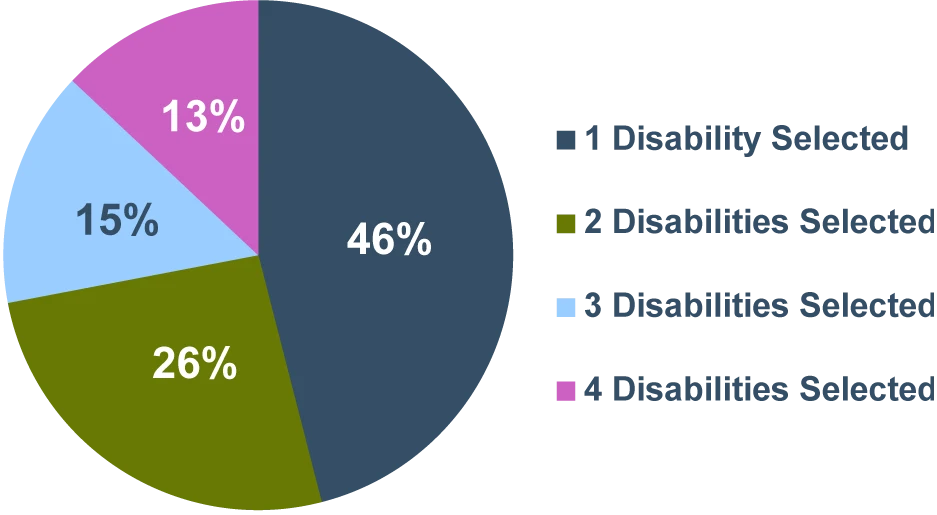
Disabled Students Who Use Accommodations at College
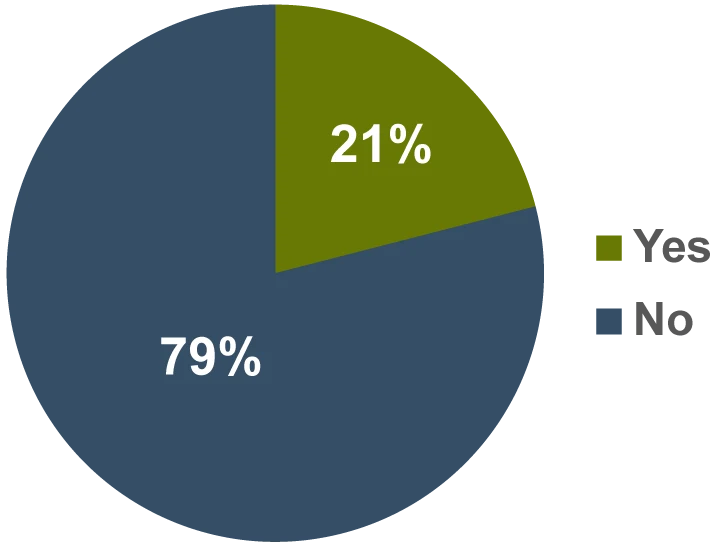
Key Findings
Disabled Students are Arriving on Campus Undiagnosed
Half of disabled college students in our survey weren’t diagnosed with their disability until college. Providing diagnostic resources may be an unexpected part of supporting the disabled student experience for colleges and postsecondary institutions.
One Size Does Not Fit All
Student identities are complex and many resist being described in just one way. Furthermore, the disabled student experience on campus is very different from the non-disabled student experience. Disabled students are less socially engaged, struggle with daily barriers, perceive their campus differently, feel isolated and misunderstood — and some decide to transfer or drop out as a result.
Yet Disability is More Common Than Ever
Disability prevalence is far higher than expected, but many disabled students are not disclosing their disability status to their institutions, instructors, or even — for fully one-third of them — their peers and friends on campus.
Students May Not Tell You About Their Disability
Non-disclosure is pervasive among disabled college students, even with friends and roommates.
Disabled Student Success Hangs in the Balance
Students repeatedly told us that because of a lack of access and inclusion on campus and in classrooms, their grades suffered, they initiated transfer or withdrawal actions, or they questioned their self-worth and hopes and dreams for the future.
Disabled Students are Arriving on Campus Undiagnosed
Half of disabled college students in our survey weren’t diagnosed with their disability until college. Providing diagnostic resources may be an unexpected part of supporting the disabled student experience for colleges and postsecondary institutions.
Yet Disability is More Common Than Ever
Disability prevalence is far higher than expected, but many disabled students are not disclosing their disability status to their institutions, instructors, or even — for fully one-third of them — their peers and friends on campus.
Students May Not Tell You About Their Disability
Non-disclosure is pervasive among disabled college students, even with friends and roommates.
One Size Does Not Fit All
Student identities are complex and many resist being described in just one way. Furthermore, the disabled student experience on campus is very different from the non-disabled student experience. Disabled students are less socially engaged, struggle with daily barriers, perceive their campus differently, feel isolated and misunderstood — and some decide to transfer or drop out as a result.
Disabled Student Success Hangs in the Balance
Students repeatedly told us that because of a lack of access and inclusion on campus and in classrooms, their grades suffered, they initiated transfer or withdrawal actions, or they questioned their self-worth and hopes and dreams for the future.
Top Recommendations to Improve
the Disabled Student Experience
The findings in this national report provide U.S. postsecondary institutions with significant insights for improvement of their student experiences and success rates. This report can be used as a starting point for more in depth data collection at your own campus or program. From instructors to staff members to administrators, each person on campus can play an important role in supporting disabled students as they enroll, persist, and complete their education and training.
Companion Report for Researchers:
Campus Accessibility Measure
In addition to this national report, there is a separate companion report for researchers, The Campus Accessibility Measure: Toward Better Research and Understanding of the Disabled Student Experience in Postsecondary Education. Besides the complete survey detail, the research companion includes the measure development process, how disability constructs were measured, factor extraction and analysis, and survey administration.
”When I first came to college, I did not know that my mental health disorder was considered a disability. I also had no idea that I was able to qualify for accommodations. The accommodations have helped me out tremendously with my coursework.
Disabled Student
